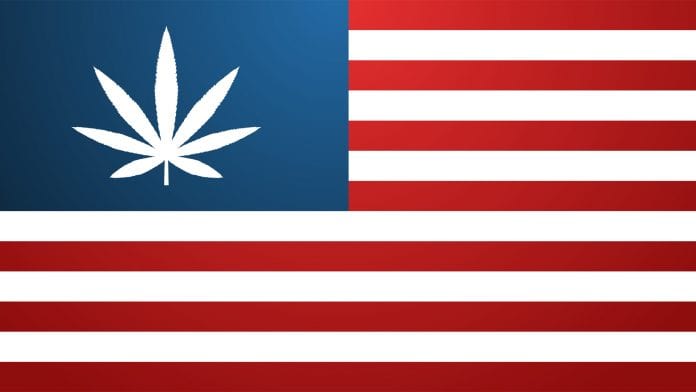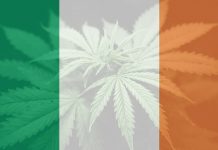
The American cannabis industry squinted into daylight as it emerged into a billion-dollar industry coming from a black market background. Since then, it is a force to reckoned with, impacting health, beauty, food, and even the beverage industry.
The American cannabis industry was very different ten years ago to what it is now. In this article, we’ll tackle the evolution of the cannabis industry in the past decade and try to take a sneak peek into its future.
Doubts on legalising cannais
In the year 2000, cannabis legality was obscure, and states in America started putting up state-legal cannabis dispensaries. The cannabis industry took a breather from its uptight security in 2009 when US Attorney General Eric Holder, halted the raids of cannabis dispensaries. In the same year, Holder announced that the prosecution of medical cannabis patients would no longer be a priority.
Then the Obama administration commenced with a clear intention of loosening the belt on state-legal cannabis operations. This pumped up the confidence of the cannabis industry.
In 2014, the Rohrabacher-Farr Amendment was passed in Congress. The amendment improved the protection for the cannabis industry as it enabled legal cannabis states to make their own cannabis regulations without obstruction. Rep. Sam Farr championed the amendment.
In 2018, under the Trump administration, US Attorney General William Barr was strong on his stance to not crackdown on cannabis businesses. Barr’s position about the cannabis business opposed that of former US Attorney General Jeff Sessions of whom he replaced.
The inevitable contagion of legal, medical marijuana
The increasing support from the people and somehow the government led to the widespread popularity of cannabis legalisation. A few years back, there were only 13 states in the US with a comprehensible medical cannabis programme. Now, over 33 states in the US have them.
The rise of medical cannabis trend could be even bigger in the future as a recent study concluded that a large chunk of patients prefers medical cannabis over pharmaceutical medicines.
The evolution of recreational cannabis over the last decade
California was the first US state to stake its citizens’ right to use cannabis. Time and time again, by failing to pass voter-approved recreational cannabis, California didn’t achieve independent, state-level cannabis legalisation then.
But in 2012, Colorado and Washington were able to legalise recreational marijuana. After that double win, Oregon, California, Nevada, and Massachusetts followed shortly. As of now, ten states in America fully legalised recreational cannabis.
The recreational cannabis legalisation in the states yielded unexpected results. One, it leveraged the property value of the neighbourhood. Second, the number of teens engaging in recreational cannabis didn’t wildly go up. Finally, the revenues gathered from the cannabis business’ tax helped the community by building roads, giving out academic scholarships, creating programs for the homeless, and more.
The positive feedback on recreational cannabis legalisation motivated some states to eye on doing the same in the coming years.
The cannabis industry innovation
The cannabis industry flourishes as usual in the American market because of its innovative solutions. For example, cannabis cultivation is solid as ever because of new cannabis farming technologies made every year. The solutions made in cannabis farming enabled growers to produce high-quality cannabis, which, in turn, yields high-quality cannabis products.
Innovation in cannabis testing is a champion in making sure that the cannabis products available in public are safe. In fact, most states with legalised medical cannabis have default testing contractors to regulate the safety of cannabis products.
Finally, technology and cannabis usage merged as the cannabis industry matures. Tools like pre-rolled joints, vapes, pens, hit the market recently.
The rise of CBD
CBD or cannabidiol is a cannabinoid compound that you can extract from the cannabis plant. This derived hemp extract boomed over the past decade due to its popularity in the medical and research world. Unlike THC (tetrahydrocannabinol), CBD has no psychoactive effects, meaning it can’t get you high. The growth of CBD went beyond as companies started infusing CBD on every product imaginable.
The Farm Bill passed in 2018, which legalised the domestic hemp industry, helped the CBD market to be projected at $22bn by 2022.
The changing image of the cannabis industry
People’s perception of cannabis changed the overall cannabis industry. Cannabis wasn’t just perceived as a recreational agent. It went full out as a supplement, drug, and medical agent.
In 2009, 44 percent of the nation’s voters were in favour of marijuana legalization. The majority of the voters still didn’t think that marijuana is eligible for legalisation. Last 2019, the majority of the voters were in favour of legalising nationwide recreational cannabis. Clearly, there’s a shift in how cannabis is perceived.
Looking ahead
The Ending Federal Marijuana Prohibition Act of 2019 is a bill introduced that would ultimately remove cannabis in the list of Controlled Substances Act. The effect would deter the federal government from harassing states that legalised medical and recreational cannabis.
Indeed, the cannabis industry had a drastic facelift. The unwaning support of the public to the industry makes us optimistic that nationwide recreational and medical cannabis legalisation in America is not so far ahead.
Sheena D. Beronio
Guest author









